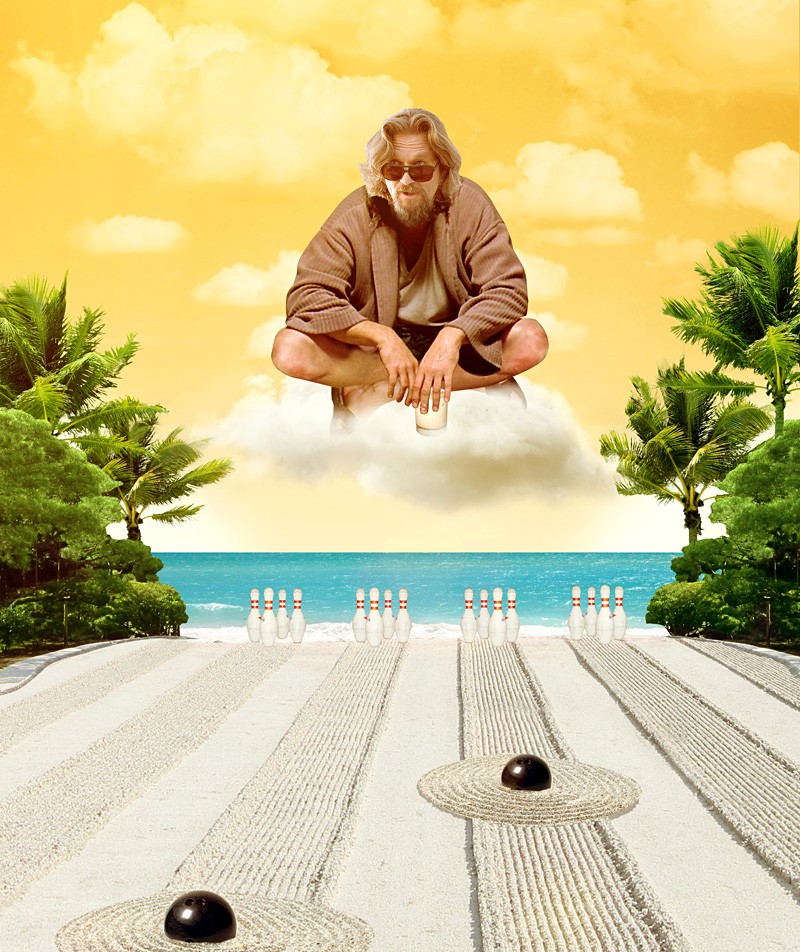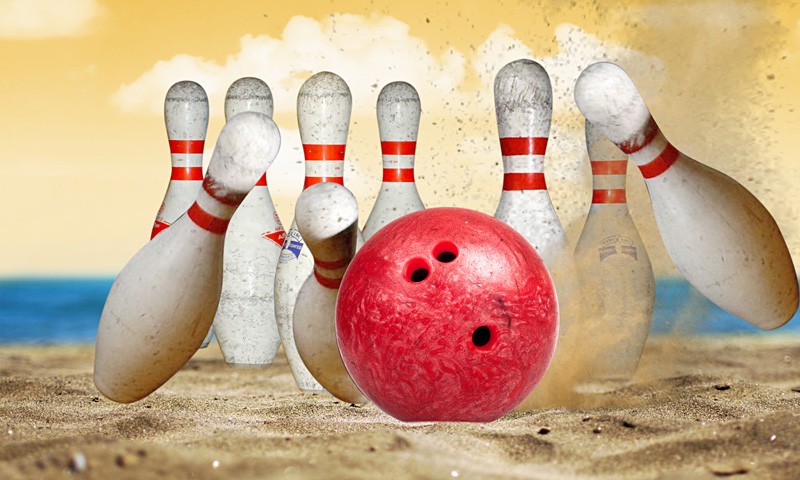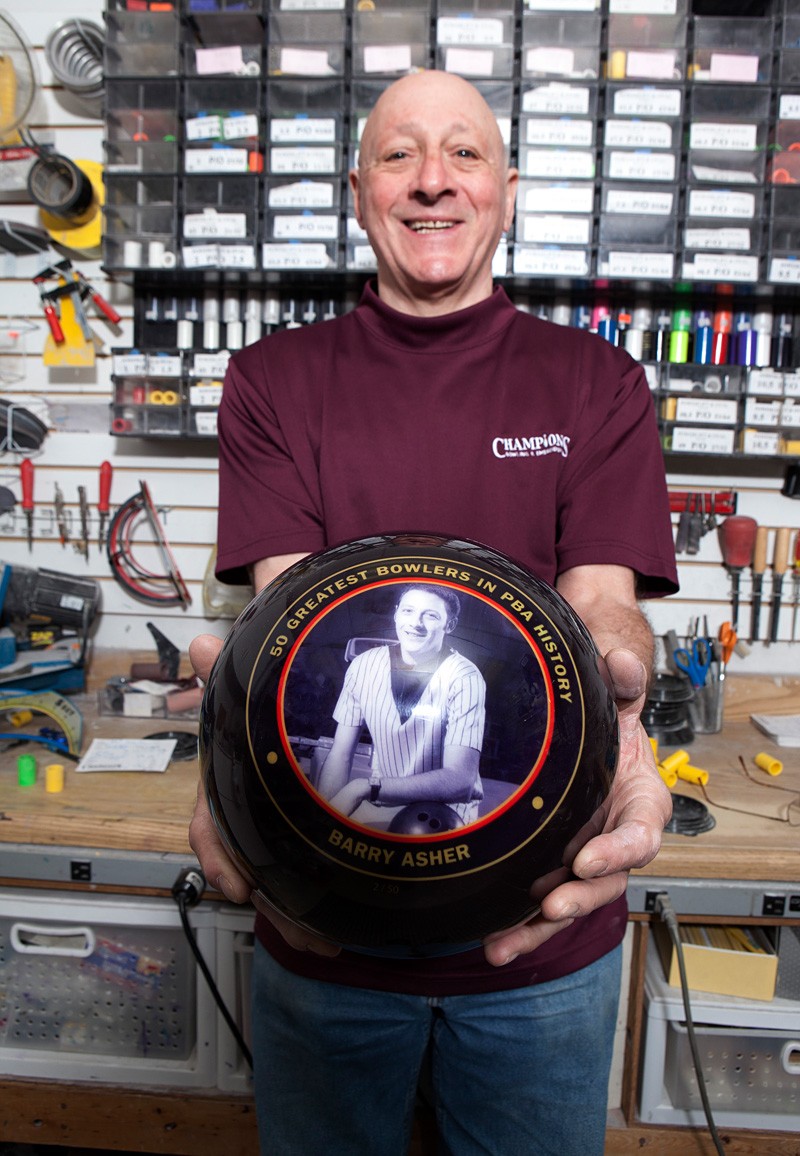
“Sometimes there’s a man—I won’t say a hero because what’s a hero?—but sometimes there’s a man, and I’m talking about The Dude here . . . sometimes there’s a man, well, he’s the man for his time and place. He fits right in there. And that’s The Dude.”
—The Stranger in The Big Lebowski
* * *
A bearded, long-haired, middle-aged man in plaid Bermuda shorts, white V-neck tee, brown bath robe, jelly sandals and dark shades walks up to a grocery store’s refrigerated aisle, opens up a carton of milk and takes a swig before using a check for 59 cents to pay for the product in the checkout line.
Despite the Stranger’s Old West-y praise and the lazy “Tumblin’ Tumbleweeds” song being layered over those introductory visuals of The Dude, many believed they were watching a loser. The dim view would only change for some by the end credits of Joel and Ethan Coen’s 1998 motion picture. But with that very first sequence, I was mesmerized and had begun to form my go-to answer when people ask what I think of The Dude:
“I want to be him when I grow up.”
It was 15 years ago when I saw The Dude for the first time. I was 37.
The nickname of the fictional Jeffrey Lebowski played by the non-fictional Jeff Bridges, The Dude would prove over 117 minutes to be, as Jenny M. Jones writes in The Big Lebowski: An Illustrated, Annotated History of the Greatest Cult Film of All Time (Voyageur Press, 2012), “this disheveled, foul-mouthed, paunchy layabout.” He smoked too much pot, drank too many White Russians (which he called Caucasians) and actually, when you think back on it, was a would-be thief because he got it in his head (thanks to John Goodman’s earth scorcher Walter Sobchak) that stealing a $1 million ransom was legitimate compensation for thugs pissing on his rug.
Although, to be fair, the rug did tie the room together.
My undying love was not shared by others on March 6, 1998, when The Big Lebowski opened, finishing sixth at the box office. Chicago film critic Gene Siskel said in particular of The Dude, “The Jeff Bridges character wasn’t worth my time. There’s no heart to him.”
But The Big Lebowski (Siskel: “The Big Lebowski? A big disappointment”) would go on to amass a cult following long before live streaming, play in midnight movie slots previously occupied by The Rocky Horror Picture Show and spawn the Lebowski Fest, which originated in Louisville, Kentucky, 12 years ago and continues annually there and in cities around the globe. The blowout returns to Southern California this month, with a screening party March 22 at Saban Theatre in Beverly Hills, followed March 23 by a bowling celebration at Fountain Bowl in Fountain Valley. Hundreds of “Achievers,” many dressed as characters in the flick, are expected.
That devotion is due in no small part to The Dude, whom I could personally praise for the next 3,204 words of this story were it not for a student at Madison University in Harrisonburg, Virginia, having already done so much more succinctly. Asked by a professor what’s so desirable about The Dude, the student wrote, “He doesn’t stand for what everybody thinks he should stand for, but he has his values. He just does it. He lives in a very disjointed society, but he’s gonna take things as they come, he’s gonna care about his friends, he’s gonna go to somebody’s recital, and that’s it. That’s how you respond.”
* * *

When I pitched this cover story to my editors, I said I wanted to explore my personal relationship with The Dude, what it was that made me fall hard for him. After all, despite my advanced age in Weekly years, I’m too young to have been from the hippie tribe that prompted Eric Cartman to complain that “all they do is smoke pot and smell bad.” However, The Dude referring to a rich man as “human paraquat”—a reference to the pesticide the U.S. lobbied Mexico to spray on marijuana fields in the late 1970s and one of the few improvised lines in the flick—is in my life-experience wheelhouse.
While better understanding The Dude and me, the hope is to also get at why a bunch of drunks meet every year to raise their White Russians to someone who does not exist. As I would soon discover, understanding Dude devotion is a well-worn pursuit. That student assessment above is included in, no shit, academic research on The Big Lebowski.
Indiana University Press in 2009 released The Year’s Work in Lebowski Studies, based on essays with such titles as “The Dude and the New Left,” “A Once and Future Dude: The Big Lebowski as Medieval Grail Quest,” “No Literal Connection: Mass Commodification, U.S. Militarism, and the Oil Industry in The Big Lebowski,” and “Holding Out Hope for the Creedence: Music and the Search for the Real Thing in The Big Lebowski.” Those essays and many, many more—including those that didn’t make it into the book—were submitted to the university by professors around the country.
Meanwhile, you can find a Barnes & Noble shelf filled with books that aim to get at the essence of The Dude. These include The Dude De Ching, The Tao of The Dude, Abide Guide: Living Like Lebowski, The Dude Abides: The Gospel According to the Coen Brothers, and even one by Jeff Bridges and co-author Bernie Glassman that came out in January from Blue Ridge Press titled The Dude and the Zen Master.
To herald the 15th anniversary of The Big Lebowski, which is a quintessential Los Angeles story, OC Weekly‘s sistah paper LA Weekly ran a package of “Happy Birthday, Dude” stories, including a piece by Nicholas Pell titled “The Dude’s Johnson” that argued that Bridges’ Jeffrey Lebowski represented a functioning penis while the other Jeffrey Lebowski, the titular Big Lebowski played by David Huddleston, represented a flaccid member. This had to do with the millionaire Lebowski showing off power but being unable to satisfy his much-younger, porn-star wife played by Tara Reid. The Dude Lebowski, meanwhile, was alternately hard and soft.
Pell’s thesis took me back to Brian Gibson’s August 2011 SideVue article, “Citizen Dude,” which found the motion picture folds into a Coen Brothers’ oeuvre (The Man Who Wasn’t There; O Brother, Where Art Thou?; No Country for Old Men; A Serious Man) in which manhood is the main focus. Gibson suggests The Dude referring to himself as a “private dick,” worrying about Nihilists cutting off his “Johnson” and playing “the most ballsy of games, bowling” are cues to “hilarious concerns about masculinity.”
The Coens stopped talking about The Big Lebowski in 2007, so who knows whether the movie is a loony metaphor for schlongs. But just as I was ready to dismiss both Pell and Gibson for reading waaaaay too much into the stoner comedy, I flashed back on one of two Busby Berkeley-esque musical numbers in the film, that one that has mound-of-flesh The Dude moving as though a cruise missile between the gams of dames in high skirts.
The Dick abides.
* * *

Let’s throw down some plot. Warning: If you have not seen The Big Lebowski but still plan to do so, jump ahead to the next section and keep right on reading.
Cowboy western-tinged, but owing more to Raymond Chandler mysteries set in Los Angeles in the 1930s and ’40s, Lebowski jumps ahead to the early 1990s of first Bush family Gulf War fame. Instead of hard-boiled detective Philip Marlowe, we get a pothead bowler of unexplained, meager means at the center of a hopelessly complex jumble.
Baddies rough up Jeffrey Lebowski, who goes by The Dude, in his apartment because they think his wife owes money to someone named Jackie Treehorn. The Dude is not married, has no clue what they are talking about and knows no Jackie Treehorn. Though it becomes apparent the wrong Lebowski has been jacked, a thug pisses on a throw rug on the way out.
Talking this over later with his bowling pals Walter, an overamped Vietnam vet, and Donny, a blank slate, it is decided The Dude must seek compensation for his soiled rug from the other Lebowski, who turns out to be a wheelchair-bound millionaire. Confronted at his estate, the big Lebowski refuses to fork over any money, so The Dude takes an expensive rug with him on the way out, stopping by to say hello to the rich guy’s much-younger wife, Bunny, who is in a bikini and painting her toenails by the pool.
The big Lebowski later calls The Dude because someone has kidnapped Bunny, and the millionaire wants the slacker to deliver the ransom money so it can be confirmed whether the kidnappers are the same thugs who’d earlier visited The Dude’s apartment. Later, different thugs, who are Nihilists with a marmot, knock The Dude unconscious in his apartment and leave with the new rug. Walter comes up with a plan to give the kidnappers a different suitcase from the one filled with the ransom. But then someone steals The Dude’s car with the suitcase inside.
The ’90s noir gets even more complicated thanks to a sadistic pornographer, an angry heiress, a “pederast” bowler, the “inner-city children of promise” known as Urban Achievers and trippy dream sequences. But in the end, the Stranger takes comfort that “The Dude abides.”
* * *
Will Russell has a breezy drawl as he talks on the phone from his home in Louisville about the Lebowski Fest he co-founded in 2002, which spawned the fan book I’m a Lebowski, You’re a Lebowski: Life, The Big Lebowski, and What-Have-You he co-wrote with fest partners Bill Green, Scott Shuffitt and Ben Peskoe, as well as Eddie Chung’s 2009 documentary, The Achievers: The Story of the Lebowski Fans.
Actually, Russell seemed happy to be taking a break from his current task. “The goons at TMZ” had just “harassed” Sam Elliott, The Big Lebowski‘s Stranger, in a parking lot, asking in ambush-interview style why he was not attending Lebowski Fest in LA. “I wasn’t invited,” the veteran actor replied. That prompted Russell to contact Elliott’s publicist to extend the invitation, which was met with interest . . . but only if Jeff Bridges attended. So after my call, Russell would be reaching out to the actor who played The Dude in hopes of landing the actor who played the Stranger.
Russell organized the first Lebowski Fest by putting up fliers in Louisville bars. “We did it as a joke at a rundown bowling alley that was Baptist-run,” Russell says. “There was a sign up that said, ‘No drinking, no cussing.’ It was a place for Christian fellowship, so we thought maybe 20 of our friends might show up. Much to our delight, 150 people showed up, some from as far away as Tucson, Arizona, and Buffalo, New York. We knew we were on to something.”
It was then decided the next Lebowski Fest would be at a bowling alley that did allow drinking and cussing. Word of the annual gatherings “somehow got picked up by SPIN magazine as part of its summer-events guide next to giant festivals such as Lollapalooza,” recalled Russell, who says that brought 1,200 “Achievers” out. “Ever since then, it’s become a phenomenon. It has its own life.”
Asked if it was the movie’s story (and quotable dialogue) or the essence of The Dude character that lights a fire in so many Achievers, Russell first said that was a difficult question before deciding that both probably inform fanatics. He believes people love The Dude because “he’s an anti-hero, anti-capitalist who is happy just to take a bubble bath. He is genuinely a nice guy, laidback and cool.”
Russell figures folks also appreciate The Dude being accepting of everyone (so long as they don’t piss on his rug), even “an asshole like Walter. The Dude can tolerate where other people can’t. And I think Walter needs a laidback friend.”
Achievers let their Lebowski freak flags fly through costume, trivia, and hardest- and farthest-traveled contests. A band play before the first night’s film screening, but Russell claims, “The bowling part is really the more fun of the two parties.
“The bowling party is more about becoming the movie,” he adds. “It’s kind of where the world of Lebowski comes to life, a living and breathing Big Lebowski that is just as unpredictable and fun and weird as the movie. You’ll have Nihilists running around with marmots, as well as lots of guys in bathrobes drinking White Russians. It’s a good time. It’s a legitimate, renegade, DIY, organic festival. It’s cult culture.”
Organizers prefer “traditional bowling alleys,” Russell says, over those newer versions you’ll find at places such as GardenWalk in Anaheim, the Outlets at Orange or the Pike in Long Beach. “They were built to be partied in,” he says of the old warhorses. “You can’t really hurt a bowling alley. We’ve had more than 50 festivals in the U.S. and overseas—they have been crazy parties, but after all of them, the bowling alleys have been left standing.”
That’s not the only reason Fountain Bowl was chosen for this year’s post-Lebowski Fest bowling celebration. It turns out the Fountain Valley venue has a Big Lebowski connection.
* * *
From the chapter titled “Just Throw the F**ing Ball, Man!” in the Bridges and Glassman book The Dude and the Zen Master:
JEFF: We’re making the movie The Big Lebowski, and everyone who’s seen the movie knows that The Dude and Walter dig bowling, right? Now, I’ve bowled a little bit in the past, but I’m not an expert like The Dude. So the Coen brothers hire a master bowler to teach John Goodman, Steve Buscemi and me how to bowl.
Later:
It seems that years ago [the master bowler] tried to bowl like in the book Zen in the Art of Archery. That book teaches the student to completely let go of his ego in order to hit the bull’s-eye. If the mind is settled and clear, the pins are practically down before the bowler cocks his hand back to throw the ball.
Unfortunately, trying to settle and clear the mind actually made things worse, not better, for the master bowler, as Bridges tells it.
Things got so bad he couldn’t throw the ball at all. He would not release it from his hand because he couldn’t get into the right mind-set. Finally, he went to a shrink, and they worked it out.
“So what do you do now?” I ask him.
“I just throw the fucking ball! I don’t think.”
* * *

Meet the master bowler, Barry Asher, who owns the Fountain Bowl pro shop Champions Bowling & Embroidery. Not only was he the bowling technical adviser on The Big Lebowski, but he is also the last person to appear on camera before the end credits roll.
Sitting on the other side of Asher’s desk at Fountain Bowl, I begin retelling Bridges’ master bowler story, but I think the word “zen” kind of freaks him out because first he shakes “no” about his being the bowler, then he says it must’ve been someone else. Finally, when I tell the part about the bowler having had to see a sports psychologist, Asher sheepishly admits, “Yeah, I’ve talked about that with Jeff.”
He adds it took two full years for him to return to the form that led him to be inducted into the Professional Bowlers Association Hall of Fame as one of the top 50 bowlers of all time. A black commemorative ball honoring that achievement is in the middle of his shop, with a picture on the orb that shows him with a full head of hair. On a nearby wall is a still of him from the end of The Big Lebowski, bald by then but still maintaining that classic bowling delivery stance as all 10 pins scatter.
Asher looks to me as if he’s in pretty damn good shape now. “At my age, I have no fear that I can throw as well as the kids,” he says. “I can’t beat them, but . . . actually, I do beat them sometimes.”
He was already living in Costa Mesa when he was contacted by the Coen Brothers’ production team about teaching actors how to bowl. He’d worked with Michael J. Fox in the 1994 movie Greedy and was known in Hollywood because his father had been in the business, first as a film director and then, because he wanted to make more money, a prop manager. “I was on sets all the time until my dad died when I was 11: Lassie, Abbott and Costello, just about any half-hour show.”
Through Asher’s teens, he rolled at the Hollywood Star lanes on Santa Monica Boulevard that would later become The Dude’s alley in The Big Lebowski.
“Oh, the stories I could tell you about that place,” Asher mentions.
Involving Hollywood actors?
“No, cocktail waitresses.”
He worked with Bridges, Goodman and Buscemi once or twice a week, teaching them bowling, and then was on the set with them for the 10 days those scenes were being shot.
“Jeff didn’t want to bowl,” Asher recalled. “He said he wanted to watch me. He said, ‘You bowl like The Dude would.'”
You may think you see The Dude bowling in the picture, but Bridges is never actually seen rolling. “He didn’t throw the ball the whole time we were there,” says the master bowler.
Buscemi turned out to be a pretty good bowler, and Goodman could hold his own, although Asher says he found the large-framed actor a bit stand-offish at first. They eventually bonded when Goodman discovered Asher was also raising a 5-year-old at the time.
John Turturro, who Asher identified by moving his arms and hands like Jesus Quintana does in the famous scene set to the Gypsy Kings’ rendition of “Hotel California,” was “in and out” for his cameo. The actor who plays Liam, a Quintana teammate seen frantically buffing a ball, is one of Asher’s bowling buddies, James Hoosier, who is attending both days of Lebowski Fest 2013.
But Asher is the bowler who opens the long final scene throwing one strike as the camera pulls up to The Dude in the foreground ordering a couple of beers. After the famous “The Dude abides” exchange with the Stranger, the camera returns to Asher rolling a second strike before panning up and out of the alley. “The lanes were easy,” confides Asher, who credited the guy seen in the film oiling the lanes with being a bona-fide expert at making the hardwood easier for rollers. Any pro who saw that scene knew right away it was Asher, something he knows because he heard from just about all of them.
As with everyone involved, Asher was disappointed by the movie’s initial reception, but something said by the bit actor who played (spoiler alert!) Saddam Hussein trying on rental shoes always stuck with the master bowler. “He said he saw the Coen Brothers’ script and offered to work for free. He knew it would become a cult classic.”
Asher recalls being enlisted years later to appear on a USA network reality show in which he would teach a guy to bowl before the fellow went home to take on his father and brother, who were avid bowlers. Later asked by someone with the production how he’d gotten the gig, Asher mentioned he’d been the technical adviser on The Big Lebowski, which gave him “instant credibility. I was in, a god.”
He most recently worked in Los Angeles on the pilot of a television show that he said had producers spending an awful lot of money.
The master bowler doesn’t suspect that one will abide.
* * *
Sipping a Caucasian alone at the far end of Fountain Bowl after leaving Asher’s shop, I spy a guy with the most unusual bowling style I have ever seen. His arm is wrapped around the ball snake-like, cradling the 14-pounder in the pocket formed by the opposite end of his elbow. As his bored companion watches from the scorer’s table, he sort of vault-spins the globe down the lane, and at least twice, it curves to pick up splits. Later, he’s employing the same unusual style, and I see him toss at least two gutter balls to leave all 10 pins standing. Such is life.
A white-haired lefty with a more fluid style makes a strike on the other end of the alley. A few lanes over from him, a young dad, his boy and his girl, who does not appear to be of school age yet, are intently examining their score card. A bunch of teens right behind me seems more interested in provoking laughter than picking up spares.
It’s late afternoon, and you’d think you were in Irvine by the way every age and race seems to be represented. Some guys with their work ties on are picking up rental shoes; a fellow with a beard as unkempt as The Dude’s has on a fiery-red bowling shirt as he orders from the bar. Males only slightly outnumber females. Typing notes for this story on my laptop (Fountain Bowl has free wireless!), I look up at one point to see Asher instructing a boy who appears to be about 12.
I may be a cynical old bastard, but looking around gave me a warm feeling. It probably would have for The Dude, too.
Sadly, bowling is as out of fashion as The Dude is these days. Asher had told me earlier the problem is his industry “doesn’t think outside the box.” He says he pushed to have Fountain Bowl host Lebowski Fest because something, anything must draw in new rollers if the sport is to survive.
“I hope this thing isn’t a big clusterfuck,” he’d said. “I want these people to come back. Maybe word will get out. Leagues don’t do it. Open bowling doesn’t do it. Lucky Strikes isn’t doing it.”
He’ll make copies of that movie production still hanging on his shop wall to autograph for Achievers. Looking at Lebowski Fests past, you get the sense those folks will have a helluva good time whether Fountain Bowl is left standing or not.
For the sake of Dudes like me everywhere, perish the thought.

OC Weekly Editor-in-Chief Matt Coker has been engaging, enraging and entertaining readers of newspapers, magazines and websites for decades. He spent the first 13 years of his career in journalism at daily newspapers before “graduating” to OC Weekly in 1995 as the alternative newsweekly’s first calendar editor.


I cannot thank you enough for the wealth of knowledge and insights I’ve gained from this website. Your dedication and expertise are evident, and I’m truly grateful for your contributions. I feel fortunate to have stumbled upon this valuable resource. It has become an invaluable resource for me, and I appreciate the effort put into creating such a fantastic platform. Goodbye! ID : CMT-7224EP3A26IDMTU22P